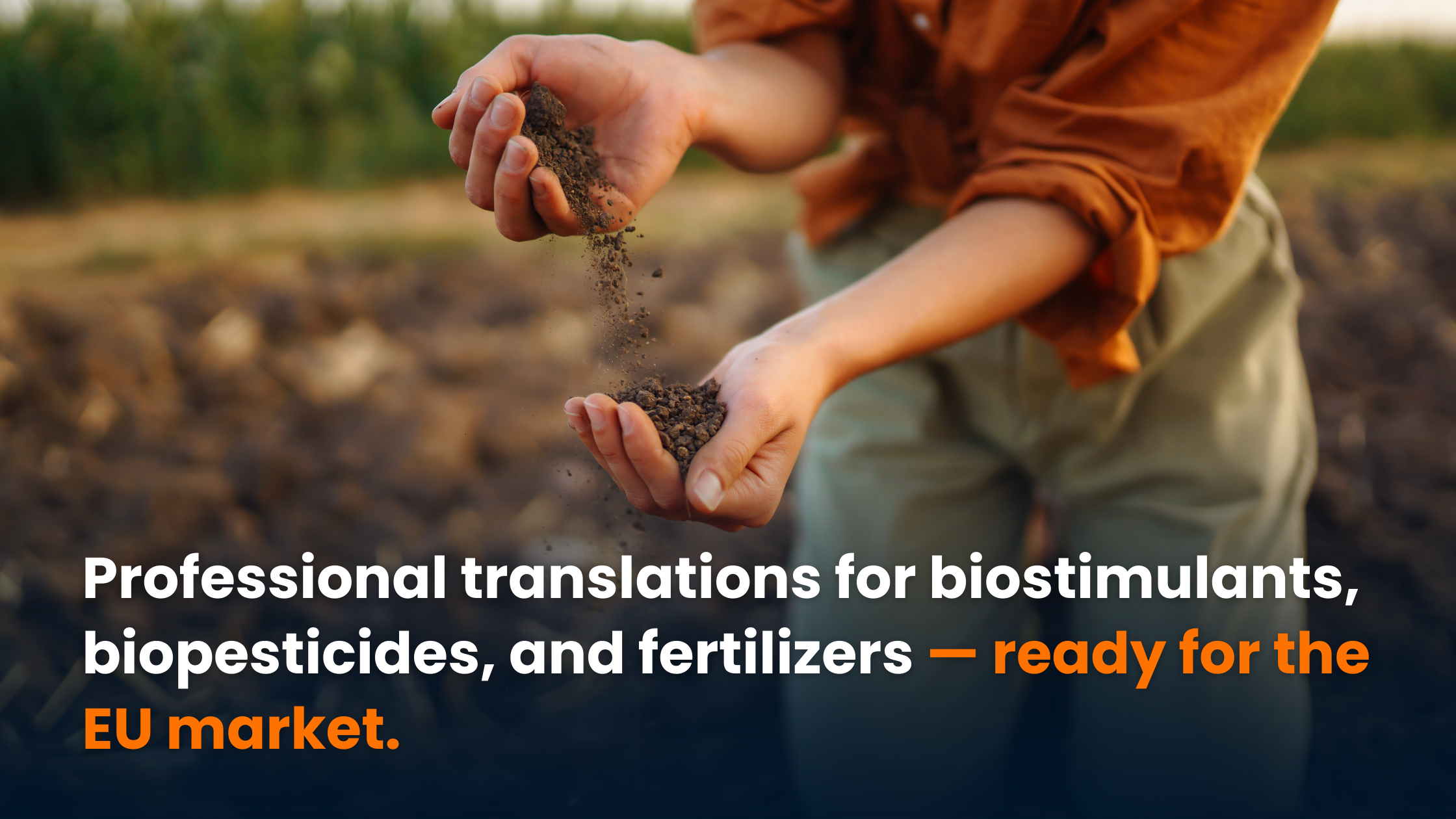Translation is a regulatory gatekeeper – English is not enough
If you’re planning to market a biostimulant, biopesticide or fertiliser product in the European Union, you’re probably familiar with the key documentation requirements: technical dossiers, labels and safety data sheets (SDS). But did you know that how these documents are translated is just as crucial as their content?
When it comes to regulatory approval, there’s no room for “good enough”. The EU consists of 27 Member States and 24 official languages. That means managing translations for every relevant jurisdiction isn’t just complex – it’s essential. A single mistranslated label, safety instruction or marketing claim can delay your market entry or, even worse, result in suspension of your product’s authorisation.
4 translation pitfalls to avoid
1. Relying on machine translation
While fast and inexpensive, machine translation tools often fail to use the EU’s official terminology and don’t catch scientific or legal nuances. For example, hazard statements and risk phrases must match the official language versions precisely – or they could invalidate your submission.
2. Non-localised labels
Translation doesn’t equal localisation. Details like dosage instructions or application terms may differ from one country to another. Local conventions matter.
3. No language version tracking
If you’re targeting multiple EU markets, it’s crucial to maintain a clear record of all official translations, including version numbers and dates, to ensure compliance and be ready for audits.
4. Using generalist translators
A linguist who isn’t trained in EU regulatory language or agrochemical documentation can easily introduce terminology errors – even if the translation sounds fluent.
How to get it right
✅ Work with expert translators
You need linguists with hands-on experience in EU chemical regulation, scientific language and national labelling norms – not just native speakers.
✅ Consult local regulatory experts
A translation that’s linguistically perfect may still fail locally. Regulatory consultants in EU countries can validate translations to ensure compliance with both national laws and authorities’ expectations.
✅ Maintain a master version
Start from one consistent English master file for all documentation. Every localised version should stem from this source to ensure internal consistency across markets and avoid version mismatches.
It’s not worth the risk
Too often, translation is treated as an afterthought in the EU authorisation process. But in reality, it can be a regulatory bottleneck or a strategic advantage. Professionally translated and localised documents don’t just help you meet compliance standards – they also build trust with regulators and end users across markets.
Looking for a clear overview of EU translation requirements?
Watch our short video presentation: Language Compliance for Biostimulants and Biopesticides.
Need help translating your product labels, SDS or marketing content into 60+ languages with regulatory accuracy?
Get in touch.

